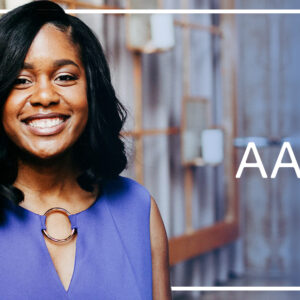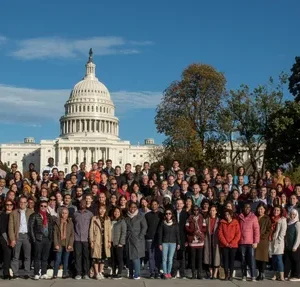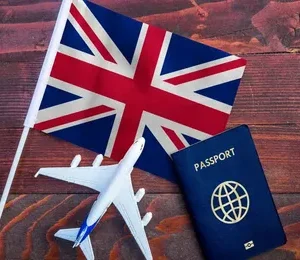Moving to Australia as a registered nurse presents a unique opportunity to advance your career, experience world-class healthcare systems, and enjoy a high quality of life. Whether you’re drawn by competitive salaries, abundant job openings, or the chance to explore vibrant cities and pristine landscapes, Australia has become one of the top destinations for internationally qualified nurses. This comprehensive guide (over 6,500 words) will walk you through every step of the process—from selecting the right visa and meeting registration standards to landing your first nursing role and understanding salary expectations. Embedded throughout are authoritative links to help you dive deeper into each topic and practical tips to make your transition as seamless as possible.
Why Move to Australia as a Registered Nurse?
Australia consistently ranks among the top countries for healthcare quality and nurse satisfaction. The nation’s public and private health sectors face ongoing staff shortages, meaning qualified nurses are in high demand across urban hospitals, regional clinics, and community care settings. Highlights include:
- Strong Demand & Job Security: According to the Australian Institute of Health and Welfare, the nursing workforce grew by more than 31% over the last five years, with projections indicating continued shortages in both metropolitan and rural regions (AIHW Salary Report ).
- Competitive Compensation: Registered nurses earn between AUD 70,000 and AUD 110,000 annually, with opportunities for overtime, shift allowances, and specialized roles that can push earnings above AUD 130,000 (Talent.com Salary Data ).
- Work-Life Balance: Australia’s healthcare system emphasizes reasonable nurse-to-patient ratios, comprehensive leave entitlements, and strong union representation, fostering sustainable workloads.
- Quality of Life: From cosmopolitan hubs like Sydney and Melbourne to idyllic coastal towns, Australia offers excellent education, public services, and a multicultural environment.
By joining the Australian nursing community, you’ll gain access to world-class professional development, strong workplace protections, and the chance to make a real difference in underserved regional areas.
Choosing the Right Visa Pathway
Navigating Australia’s visa landscape is often the most complex part of moving abroad. Fortunately, there are several visa subclasses tailored to skilled healthcare professionals. Below is an overview of the most relevant options for registered nurses.
| Visa Subclass | Type | Key Features |
|---|---|---|
| 189 Skilled Independent | Permanent | No sponsorship required; points-tested; leads to citizenship eligibility. |
| 190 Skilled Nominated | Permanent | Requires nomination by an Australian state or territory; extra points awarded. |
| 491 Skilled Work Regional (Provisional) | Temporary (5 yrs) | Requires sponsorship by a state/territory or family member in a designated regional area; pathway to permanent residency via subclass 191. |
| 482 Temporary Skill Shortage | Temporary (up to 4 yrs) | Employer-sponsored; must work for the sponsoring employer; can transition to permanent residency. |
| 186 Employer Nomination Scheme | Permanent | Employer-sponsored; direct route to permanent residency if you hold subclass 482 or meet direct entry criteria. |
- Subclass 189 Skilled Independent Visa: A points-based visa that does not require employer or state sponsorship. You must score at least 65 points through factors like age, English proficiency, and work experience. Nurses on this visa receive full work rights and permanent residency upon arrival.
- Subclass 190 Skilled Nominated Visa: Similar to the 189, but requires nomination by an Australian state or territory. Nomination adds 5 points, making it easier to meet eligibility thresholds. Some states prioritize nurses to address local shortages.
- Subclass 491 Skilled Work Regional (Provisional) Visa: A provisional visa for those willing to live and work in designated regional areas. After three years, holders may qualify for permanent residency under subclass 191. It’s an excellent option if you’re open to rural or remote practice, where additional regional allowances often apply.
- Subclass 482 Temporary Skill Shortage Visa: Employer-sponsored short-term solution. Allows stays up to four years with a sponsoring healthcare organization. This route can lead to permanent residency via the Employer Nomination Scheme (subclass 186) after meeting specific criteria.
- 186 Employer Nomination Scheme: Direct entry stream for nurses working under subclass 482 or those recruited directly overseas. Offers permanent residency once your employer lodges a nomination and you meet the minimum requirements.
Comparison of Visa Features
| Feature | 189 | 190 | 491 | 482 | 186 |
| Permanent | Yes | Yes | No (Pvt) | No | Yes |
| Points Test | Yes | Yes | Yes | No | No |
| Sponsorship | Not Needed | State/Territory | State/Territory or Family | Employer | Employer |
| Processing Time | 8-12 months | 6-9 months | 4-6 months | 1-3 months | 5-8 months |
Each pathway has trade-offs between processing speed, sponsorship requirements, and geographic flexibility. It’s crucial to evaluate your personal circumstances, preferred location, and long-term goals before applying.
Meeting Eligibility Criteria
Before lodging a visa application, you must satisfy several core eligibility requirements:
- AHPRA/Nursing Board Registration: Obtain registration with the Nursing and Midwifery Board of Australia (NMBA/AHPRA), which confirms your qualifications and practice standards.
- Skills Assessment: Have your credentials assessed by the Australian Nursing & Midwifery Accreditation Council (ANMAC Skills Assessment) to ensure they align with Australian standards.
- English Language Proficiency: Demonstrate minimum scores—typically an IELTS overall 7.0 (no band less than 7.0) or OET with at least a B grade in each component (Home Affairs English Requirements) .
- Work Experience: Most visas require at least three years of post-qualification nursing experience.
- Health Examination: Undergo a medical examination with a panel physician to satisfy health requirements.
- Character Checks: Provide police clearances from every country you’ve lived in for 12 months or more since turning 16.
Failing to meet any of these criteria can lead to application refusal. Planning ahead and securing documentation early will streamline the process.
AHPRA Registration: Step-by-Step
All overseas nurses must register with AHPRA before practising in Australia. As of April 23, 2025, new streamlined standards for internationally qualified registered nurses (IQRNs) are in effect, reducing processing delays by up to 12 months.
- Create an AHPRA Account: Register through the AHPRA Practitioner Portal and complete the identity verification process online.
- Choose the Correct Pathway: Most applicants select General Registration for IQRNs, which applies to nurses registered and practising in comparable jurisdictions (e.g., UK, Canada, NZ).
- Document Submission:
- Certified copies of primary nursing qualifications.
- Evidence of 1800 practice hours in the past three years.
- Proof of professional indemnity insurance (for some jurisdictions).
- English test results (if required under migration rules).
- Fees & Processing: The standard application fee is AUD 330, with an annual registration fee of AUD 615 upon approval. Current assessment timeframes range from 4 to 9 weeks for applications lodged after April 1, 2025.
- Outcome & Next Steps: Upon approval, you’ll receive an AHPRA registration number. Keep your registration current by renewing annually through the portal before the expiry date.
Completing AHPRA registration early can align your visa and registration approvals, minimizing waiting periods after arrival.
Skills Assessment by ANMAC
A positive skills assessment from ANMAC is mandatory for most skilled visas:
- Who Needs Assessment: All subclass 189, 190, and 491 applicants must obtain an ANMAC assessment confirming your qualifications and professional experience (ANMAC Nurse Assessment).
- Application Components:
- Application form with CV and detailed nursing history.
- Certified qualification transcripts and course outlines.
- Evidence of registration from your country of qualification.
- Verification of employment details (hours worked, scope of practice).
- Processing Time & Fees: Current processing takes approximately 10 to 12 weeks, with fees around AUD 1,500. Expedited options may be available for an additional charge.
Successfully passing ANMAC’s assessment earns you the necessary points for migration and confirms your readiness for Australian practice.
English Language Requirements
Australia’s healthcare standards demand high English proficiency to ensure patient safety and effective communication:
| Test | Overall Score | Minimum Component Scores |
| IELTS (Academic) | 7.0 | 7.0 each in Listening, Reading, Writing, Speaking |
| OET for Nurses | B | B in Listening, Reading, Writing, Speaking |
| PTE Academic | 65 | 65 in each of the four skills |
Results must be no more than three years old at the time of lodging your visa application. Some pathways may accept alternative tests, so always check the specific visa guidelines on the Department of Home Affairs website.
Health & Character Checks
To protect Australia’s community and healthcare reputation, all applicants undergo:
- Medical Examination: Conducted by an approved panel physician. Tests include chest X-ray, general physical examination, and any additional tests as requested based on country of origin.
- Police Clearance Certificates: Issued from each country where you held residency for 12 months or more since age 16. Documents must be translated to English and certified.
Ensure these checks are completed within the visa-specific timeframes to avoid delays or refusals.
Effective Job Search Strategies
Securing the right nursing role requires targeted research and professional branding:
- Optimize Your Resume and LinkedIn Profile: Tailor your CV to Australian standards, emphasizing quantifiable achievements (e.g., “Managed 12 critical care patients per shift”). Highlight any specialty areas such as ICU, aged care, or midwifery.
- Utilize Leading Job Portals:
- Seek and Indeed for nationwide listings.
- Australian Nursing Agency for contract and agency roles.
- State health service websites (e.g., Health NSW ).
- Engage Recruitment Agencies: Specialized nursing recruiters can fast-track placements and guide visa sponsorship discussions.
- Network & Professional Associations: Join the Australian Nursing and Midwifery Federation or local chapters to connect with peers, attend webinars, and discover unadvertised roles.
- Interview Preparation: Familiarize yourself with common Australian nursing interview questions, code of conduct standards, and scenario-based assessments.
Persistence and proactive engagement often lead to multiple interview calls within 2-4 weeks of submitting applications.
Salary Expectations by State & Territory
Australia’s nurse salaries vary significantly by location. Below is a snapshot of average salary ranges for registered nurses in each state and territory (Victoria University Data ):
| State/Territory | RN Salary Range (AUD) | EN Salary Range (AUD) |
| Tasmania (TAS) | 75,902 – 96,423 | 68,000 – 81,000 |
| Queensland (QLD) | 79,058 – 106,144 | 71,234 – 82,599 |
| South Australia (SA) | 70,535 – 96,242 | 62,642 – 71,835 |
| Northern Territory (NT) | 85,000 – 105,000 | 67,000 – 77,000 |
| Victoria (VIC) | 58,489 – 129,833 | 54,672 – 57,517 |
| New South Wales (NSW) | 69,810 – 98,014 | 62,914 – 70,454 |
On average, a registered nurse makes AUD 89,204 per year, while an enrolled nurse earns around AUD 67,959. Remote and regional roles frequently offer higher base salaries and additional incentives to attract skilled staff.
Cost of Living & Financial Planning
While salaries are attractive, Australia’s cost of living varies by city:
- Sydney: Highest rental and transport costs; an RN salary of AUD 90,000 affords a modest two-bedroom apartment in suburban areas.
- Melbourne: Slightly lower rents; strong public transport network.
- Brisbane & Adelaide: More affordable housing with comparable healthcare job markets.
- Regional Centers: Lower living costs and lucrative rural allowances.
Use the Numbeo Cost of Living Calculator to estimate your personal budget. Plan for upfront expenses such as visa fees (AUD 4,000–6,000), relocation costs, and initial rent deposits.
Preparing for Relocation
A smooth move requires organization:
- Accommodation: Short-term rentals via platforms like Airbnb or serviced apartments while you search for long-term housing.
- Bank Accounts: Major banks (Commonwealth Bank, ANZ, Westpac) allow you to open accounts pre-arrival. Transfer funds through low-cost services such as Wise.
- Tax File Number (TFN): Apply online once in Australia to avoid higher withholding tax.
- Superannuation: You’ll receive employer contributions (typically 11% of your salary) into your super fund. Compare popular funds at Canstar.
- Healthcare: International nurses on permanent or provisional skilled visas can join Medicare after a waiting period. Consider private health insurance for immediate coverage.
Having these essentials sorted before you land will reduce stress and help you focus on your new role.
Settling In & Professional Development
Beyond the paperwork, integrating into Australia’s nursing community enriches your experience:
- Driver’s License & Transport: Exchange your overseas licence if eligible, or obtain a local licence. Australia’s public transport is reliable in major cities.
- Continuing Professional Development (CPD): AHPRA requires 20 CPD hours per registration year. Explore courses through the Australian College of Nursing.
- Networking: Attend state-based nursing conferences and webinars. Mentorship programs, such as those offered by ACN, help international nurses acclimatize.
- Community Involvement: Join local community organisations, volunteer in health promotion events, and connect with other expatriates via Facebook groups or Meetup.
Ongoing learning and community engagement will accelerate your career advancement and personal fulfillment.
Frequently Asked Questions
Q1: How long does the overall process take?
Combining ANMAC assessment (10–12 weeks), AHPRA registration (4–9 weeks), and visa processing (4–8 months), most nurses complete all steps within 6–10 months.
Q2: Do I need to be in Australia to apply?
No. You can submit ANMAC, AHPRA, and visa applications while offshore. Completing paperwork early reduces post-arrival waiting times.
Q3: Can family accompany me?
Yes. Skilled visas allow partner and dependent visas. Your spouse may be eligible to work unrestricted, and children receive Medicare benefits.
Q4: Are there any age limits?
For points-tested visas (189, 190, 491), applicants must be under 45 at lodgment. Employer-sponsored visas (482, 186) have no age limit.
Q5: Is relocation assistance available?
Many regional employers offer sign-on bonuses, relocation allowances, and subsidised housing. Check specific job advertisements and negotiate with recruiters.
Conclusion
Moving to Australia as a registered nurse is an investment in your professional growth and personal wellbeing. With thorough preparation—securing ANMAC and AHPRA registrations, choosing the right visa, and understanding local job markets and living costs—you can navigate the process efficiently. Once settled, you’ll discover a supportive healthcare community, abundant career pathways, and the unmatched lifestyle that Australia offers. Start your journey today by reviewing the visa Checklists and Guides and reaching out to specialized nursing recruiters to get one step closer to your Australian dream.






